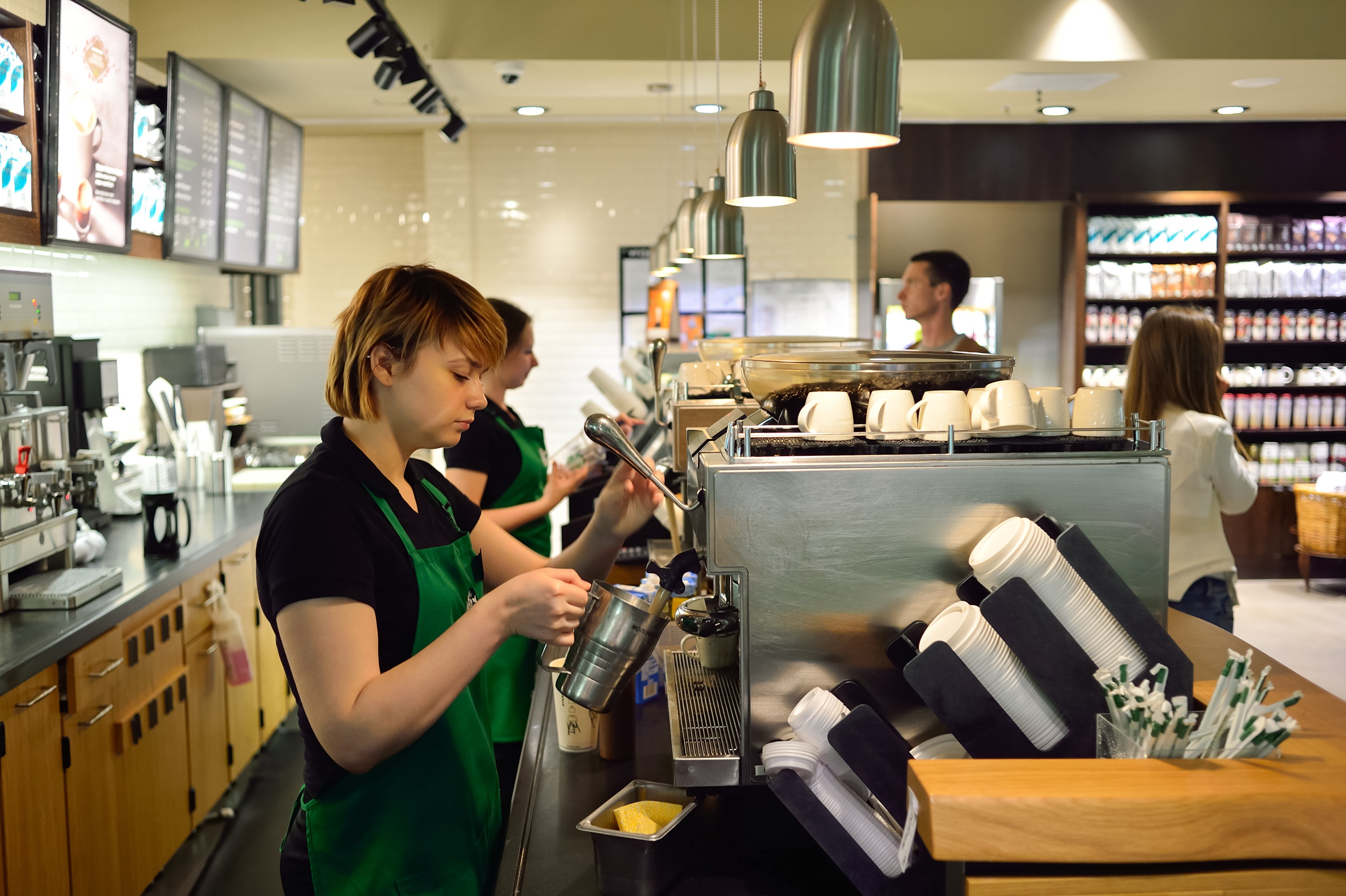
The coffee giant has relaxed its rules, encouraging its “partners” to show some individuality. Dyed hair, fedoras and leather trainers are in, according to a “look book” published online late last month.
“We’re inviting you to bring your personal taste and handcrafted style to work,” Starbucks told workers. “As ambassadors of the Starbucks brand, you should feel proud of your own look as you tie on the green apron.”
According to a recent study of human resource professionals, cited by the Washington Post, Starbucks is not the first company to try and its corporate dress codes in order to placate and attract staff.
In a survey of 3,490 human resources professionals by the Society for Human Resource Management, 59 % said their companies allowed casual dress at least once a week, up from 55% in 2012 and 40% of the companies allowed casual dress every day, up from 36 in 2012.
But, is Starbucks’ dress code about more than just appeasing its millennial workforce? In the UK, high streets have seen a 25% increase in the number of independent food outlets, while economist Douglas McWilliams’s book, The Flat White Economy, suggests that “hipsters”, or more specifically urban millennial entrepreneurs, are the driving force behind the future of the economy.
And, with Starbucks and other similar big-name retailers hit by customers voting with their feet over recent corporate scandals, could the encouragement of beards, tattoos and dyed hair, all be part of a bigger plan to emulate the softer, more individual image of its independent coffee shop rivals?
It would not be the first time, in 2009, Starbucks opened its first, Seattle store, outside of the Starbucks brand, “15th Ave Coffee & Tea” was completely unrecognisable from its parent company, other than a sign on the door: “inspired by Starbucks”. In Sydney, McDonalds has launched a one-off “hipster” café, called The Corner, which serves quinoa salads and pulled pork and the servers where chambray shirts and dark jeans.
Starbucks seems to be trying to shake its corporate image, why that is, and whether other big brands will follow suit, remains to be seen.
Ellie Clayton
